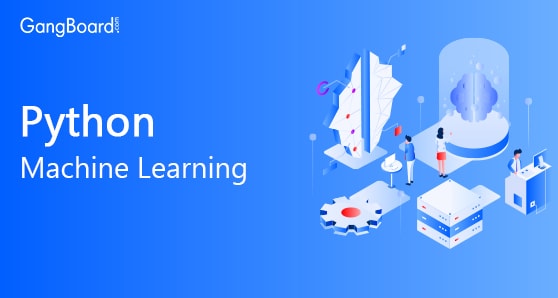
Machine Learning in Python
Machine Learning in Python
Python is an appealing and potent interpreted language. It is a compact package of language that can be used for research and development work and also for developing production system. The most efficient way to begin with Python for machine learning is to accomplish a project.
Table of Contents
- A Concise Project for the Beginners
- Step by step Machine Learning in Python
- Why Should You Choose Python for Machine Learning
Click here to know what is Python!
A Concise Project for the Beginners
While books give more of a theoretical knowledge, a project gives a more of practical learning that helps the beginners to identify where the application of machine learning is taking place. There are a few steps to the machine learning:
- Define Problem
- Prepare Data
- Evaluate Algorithm
- Improve Results
- Present Results
The most efficient outcome of any new process or tool is through the machine learning process and covering up the important steps.
Step-By-Step Machine Learning in Python
Some of the primary steps that cover in the process of learning are:
- Installation of Python and the SciPy platform
- The database loading
- Summarization of the database
- Visualization of the database
- Some of the algorithms evaluation
- The prediction making
These make the compact steps for the beginners in the Python machine learning.
Installation of Python and the SciPy platform
The Python and the SciPy platform is to be installed in the system and get started with. Some of the key libraries that are required for the Python are
- Scipy
- Numpy
- Pandas
- Sklearn
- Matplotlib
After the installation process is over, it is best to check with the system if it has been installed properly and working as required. It is more advisable to work directly in t he interpreter and hence keeping things simple and focused on the machine learning instead of the toolchain.
The Database loading
The most common dataset is the iris flowers. This is also used as “hello world” dataset in the machine learning by majority of the people. This dataset contains 150 observations of the iris flowers. There are four columns of measurements of flowers and the fifth column displays the species of flowers observed.
Summarization of Database
There are a few more dimensions to observe the data.
- Dimensions of the dataset
- Peek at the data itself
- Statistical summary of all attributes
- Breakdown of the data by the class variables
Data Visialization
After the basic idea of data, some visualization is required for the further process. While univariate plots are required to understand each of the attributes, multivatiate plots are required to understand the relationships among the attributes.
Some of the Algorithm Evaluations
After the above processes, some models are required to estimate the accuracy of the unseen data. Following steps are:
- Primarily it is required to know if the datasheet is workable and precise on the unseen data. Statistical methods are used to estimate the accuracy of then models that have been created on the unseen data.
- The 10-folds cross validation will be used to estimate accuracy
- Though it’s not known that which algorithm would be best suited, an idea can be obtained from the plot
- Out of all the models that are obtained, the best one has to be selected.
- An independent final check on the accuracy of the best model is obtained.
Why Should You Choose Python for Machine Learning?
There is no arguing with the fact that Python is widely considered as the preferred language for teaching and learning Ml (Machine Learning). Here is the list of reasons that prove so.
- Easy to learn. As compared to c, c++ and Java, the syntax is simple and contains a lot of code libraries that offer you a hassle-free using experience.
- Despite being slower than some of the other languages, the data handling capacity of Python is exceptionally great.
- Open Source: Being an open source programming language, Python is gaining popularity in the Analytics domain unlike any other language.
- The capability of interacting with almost all the third party languages and platforms is way too good, making it a preferred option for Machine Learning.


 +1 201-949-7520
+1 201-949-7520 +91-9707 240 250
+91-9707 240 250